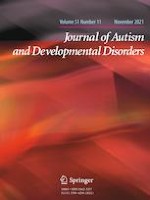04-01-2021 | Original Paper
The Effects of Contact and Labeling on Attitudes Towards Individuals with Autism
Gepubliceerd in: Journal of Autism and Developmental Disorders | Uitgave 11/2021
Log in om toegang te krijgenAbstract
Typically developing young adults perceive their peers with autism more negatively than those without autism, but less so when they have experience with individuals with autism. Study 1 examined whether typically developing university students’ (n = 70) judgments of their peers would differ as a function of interpersonal contact and being labeled as autistic. Perceptions of peers with autism were consistent with stereotypes about autism and were associated with contact. In Study 2, typically developing university students (n = 130) imagined interacting with a student with manipulations of perseverative behavior and the label of autism. Attitudes towards individuals with autism were more positive following an imagined contact scenario with a peer demonstrating perseverative behavior with a label of autism.
